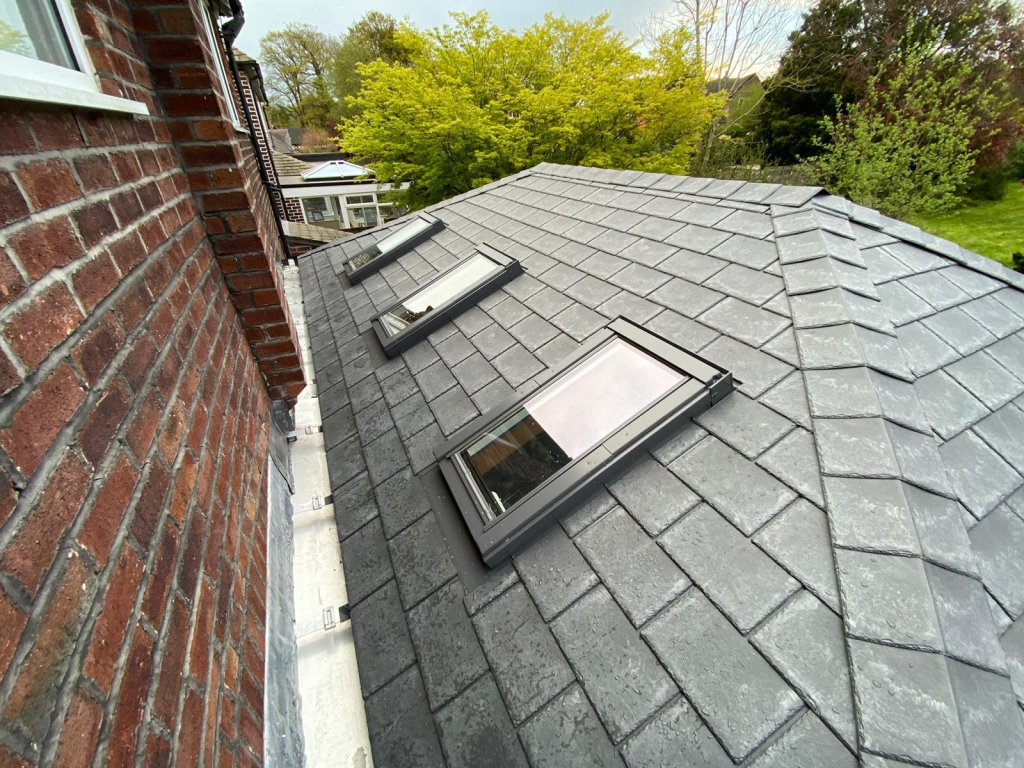Roofs in the UK are subjected year round to a variety of weather conditions. The constant exposure to weather conditions, from heavy rain and snowfall in winter to high winds and fluctuating temperature can wear down roofing materials. Over time, these environmental factors can lead to roof damage, and in some cases, replacement is the best solution. It is an expensive undertaking to replace a roof, but is necessary for the home’s structural integrity and to prevent future repairs. Knowing when to replace your roof, whether it’s leaking or old, is essential to protecting your home.
A roof replacement is necessary when the damage to a roof is beyond repair. Regular wear and tear, along with age, can lead to roof deterioration, which may result in leaks, sagging, or the loss of shingles. The most common materials used for roofing in the UK include tiles, slates, and flat roofs, each of which has its own lifespan. For example, traditional clay or concrete tiles can last for around 50 years or more, while asphalt shingles typically last between 20 and 30 years. When these materials begin to fail, replacement is the most cost-effective solution to prevent further damage to the home’s structure and interior. It is important to replace your roof for safety reasons and the protection of your house.
Replacing a roof in the UK involves careful planning, especially when it comes to selecting materials that comply with local building regulations and weather requirements. For example, listed buildings or homes in conservation areas may require specific types of tiles or slates that match the original aesthetic. In addition to their aesthetic appeal, materials should be able to withstand the regional climate, especially in regions prone heavy rain or high winds. Homeowners often opt for tiles or slates due to their durability and classic appearance, but modern alternatives such as composite or synthetic tiles are also gaining popularity for their lightweight design and energy efficiency. Replacing a roof is also an opportunity to improve insulation and ventilation, helping to lower energy bills and increase indoor comfort. Good contractors will consider all of these factors and provide guidance for the most suitable solution to each house.

Depending on factors such as the type of roof and materials used, its complexity, location, size, etc., the cost can vary greatly. A complete roof replacement for a three-bedroom standard semi-detached home can range between 5,000 to 12,000. Labour often makes up a significant portion of the cost, and scaffolding and waste removal add to the total expense. However, this investment is often offset by increased property value and reduced future maintenance costs. It is vital to obtain at least three quotes from reputable contractors and ensure they are members of organisations like the NFRC (National Federation of Roofing Contractors) or TrustMark. To protect themselves from delays or poor work, homeowners should also have written warranties, clear contracts and insurance. A quality roof can be expensive, but it will provide long-term security. To obtain more information kindly head to Roofadvisor
It is important to select the best roofing material for your roof replacement that will suit both your aesthetic requirements and weather conditions. In the UK, slate and tile roofs are particularly popular due to their durability and longevity. Flat roofs, however, are common in many modern structures or additions. Materials like rubber membrane or bitumen are often used for flat roofs, providing excellent waterproofing and insulation. While these materials can be cost-effective, they may not offer the same lifespan as traditional materials like slate or tile. It is important to consult with a professional roofer to determine the best option for your home, considering factors such as budget, climate, and the architectural style of your property.
Roof replacement in the UK is a major but necessary investment that can greatly enhance the value, safety, and energy efficiency of your home. By recognising the signs of roof failure early, choosing the right materials, and hiring reputable professionals, homeowners can ensure a smooth and successful project. The cost of a new roof may be high, but the benefits in the long run, such as improved insulation and reduced maintenance costs, make it worth the investment. Long-term, investing in research and planning will be worth it. Maintaining a reliable and secure roof, whether you live in an urban townhouse or rural cottage is important for a comfortable lifestyle. Roof replacements can add beauty and function to your house if you take the right steps.